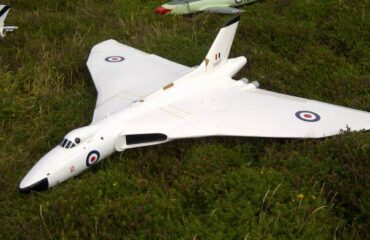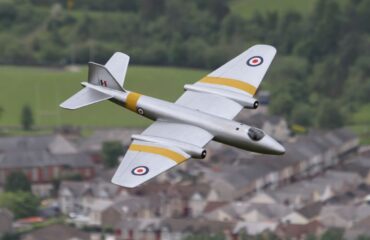New Dynamic Soaring Record 513mph
According to Andy Ellison on the RCM&E Forum “Spencer Lisenby established a New Dynamic Soaring world record 513 mph flying his Kinetic 130 at Weldon, with a wind up to 60 mph. 513 mph is 825,6 km/h, an impressive 229 m/s.” (This is now out of date – Ed. April 2023)
So I looked for the You Tube Video and found one from November 2014 at 505mph. I am sure there is one for 513, but I couldn’t find it. So watch this one, and see if you can follow the plane?
The commentary reads “On November 22nd, 2014 at around 2.30 pm local time, Bruce T. flew a new Dynamic Soaring world speed record of 505 mph (810 kph) at the hill in Weldon, CA. He used a Kinetic 130 sailplane ballasted to about 26 lbs. The wind was between 55 and gusts up to 65 mph and temperature was 65 degrees Fahrenheit. I had the extreme pleasure to be watching the flight alongside Alan Cocconi who was at the radar gun. Bruce just 30 minutes earlier did a 503 mph pass, and on this same flight seconds ago he made a pass at 504 mph so it was a very consistent performance indeed! A magnificent sailplane, outstanding flying and a great bunch of very dedicated people loving their sport! Sorry for my inappropriate language in the commentary. I was excited…on the last lap, the plane got hit at the lower turn by a massive gust and got sucked down way below where we and the pilot could see it. Luckily, it shot back up but so fast nobody saw which way it went. You then know why you should always go for cover behind a very massive rock during the whole flight. Kinetic energy of a 26 lbs plane at 500 mph is roughly the same a car of 3000 lbs has at 65 mph…! Watch it at 720HD setting or you won’t see the plane. And one last personal comment…this won’t hold very long. The passes just before and after the 505 mph pass seemed faster to me…or is it just wishful thinking?”
How they manage to film the plane at that speed is beyond me. As he says, the setting has to be at 720HD to capture the plane at that sort of speed. Just to put it in context, a fast power plane will travel at about 150mph, so this is a glider travelling at over 3 times that speed! Clearly he uses a helmet camera. At one point in the video he loses the plane but it survived. Clearly hiding behind a rock is advisable!
The hill Weldon is in California. If you look at the surface they have to land on rocks and scrub – no forgiving heather and lush vegetation. How awful must it be to fly a plane in 65 degrees farenheit. I would miss the chill factor of 2 degrees and a 35mph wind taking the temperature to the equivalent of -10 degrees – not?
If you are new to Dynamic Soaring, Wikipedia describes it as “a flying technique used to gain energy by repeatedly crossing the boundary between air masses of significantly different velocity.” It involves flying in a continuous loop on the blind side of a hill each time getting a kick from the wind over the top. One needs somewhere like Rushup Edge near Castleton, Derbyshire, which has sharp slopes on both sides leading to a peak at the top. I have yet to try it. It was bad enough last weekend flying my newly acquired and repaired several times D40 on the front side. How flying it in a continuous loop close to the ground is possible at over 200mph, I just don’t know.
I found an article on RC Soaring, which gives very good advice here
I was talking to a friend of mine who sailed across the Atlantic and said he saw Stormy Petrels doing it on the back of huge waves – I then found an article which explains how Albatrosses do it here. It was from watching birds do it that the idea came from originally, as indeed was slope soaring. How many times have you watched the effortless capabilities of a buzzard. Moreover, how many of you have mistakenly flown a buzzard rather than your plane then heard a crash?
The theory is explained in this You Tube Video
So, if in doubt, copy the birds. I have lost count how many times seagulls have followed my glider when flying near the coast….




You must be logged in to post a comment.